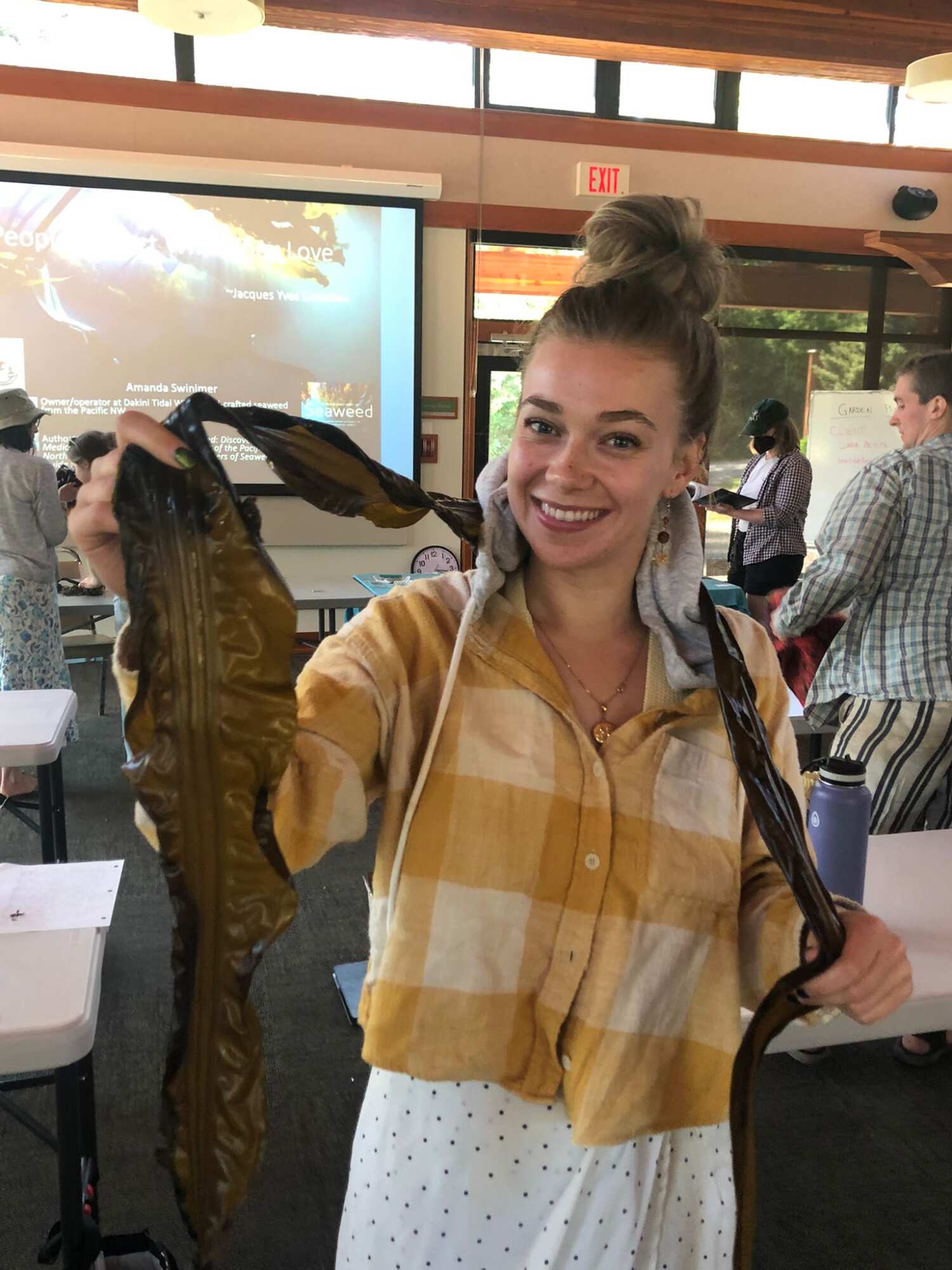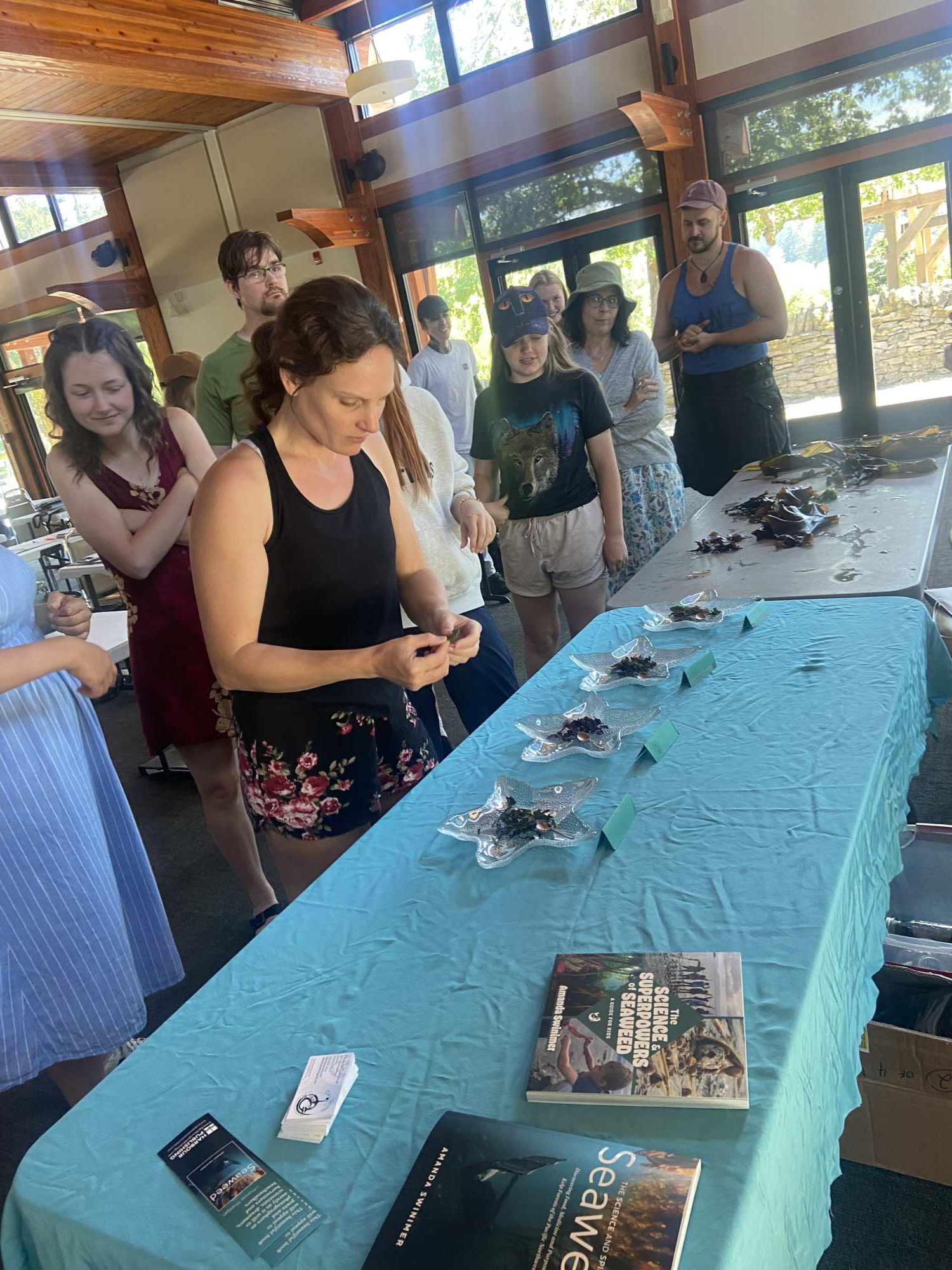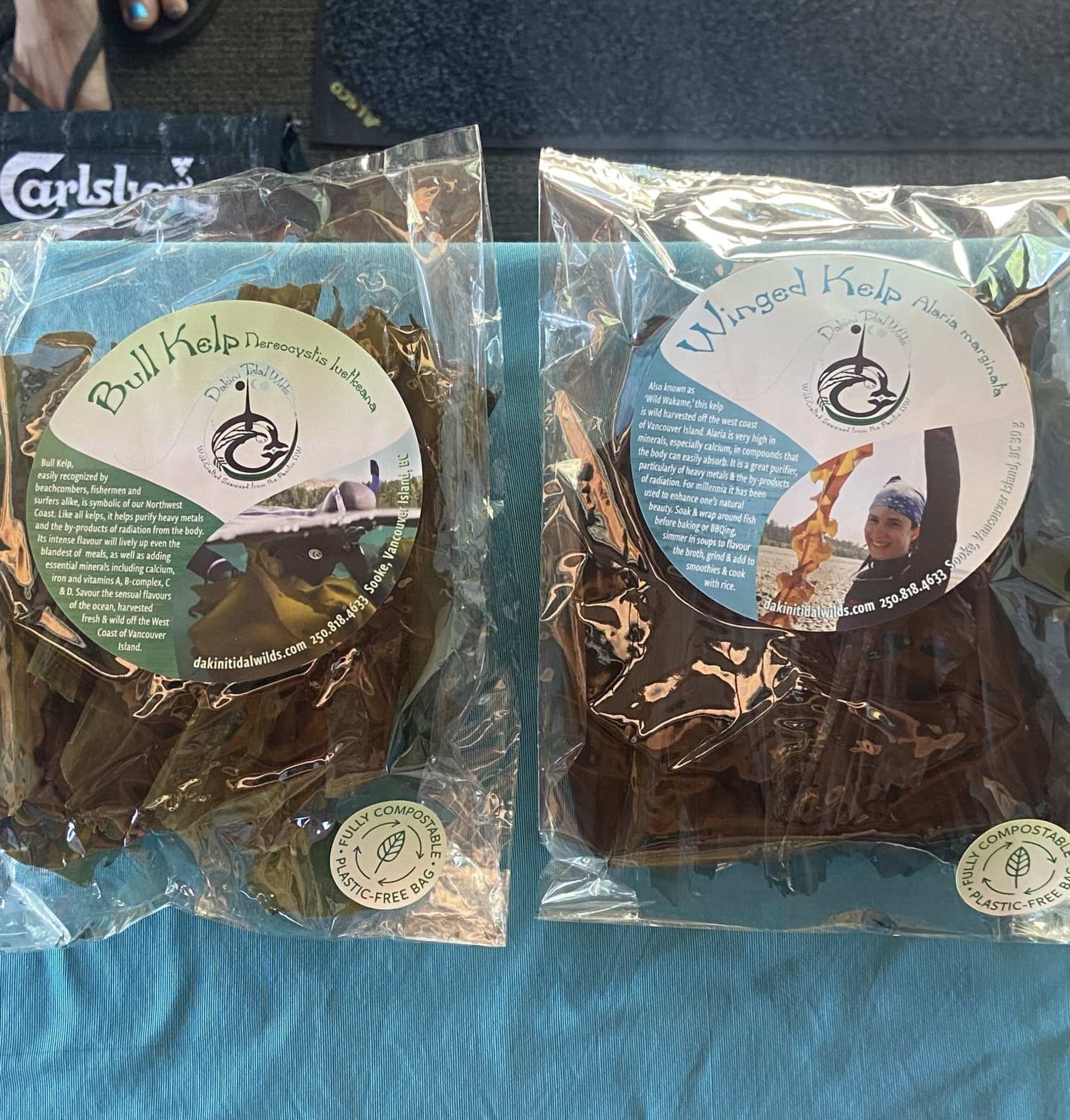Special Topics in Horticulture: Seaweed
Special Topics in Horticulture: Seaweed
Student Blog Post by Tierra Doyle and Sebastien Strembiski
Let us take you on a quick dive into the marvelous world of seaweed. From the vast depths of the ocean to the shallow reefs you'll find a taxonomically diverse array of algae.
To be more specific macro and micro algae, these algae are photosynthetic and able to tolerate extreme conditions. Today we will be covering macro-algae or more commonly identified as seaweed. Marine seaweed lack roots and instead absorbs nutrients directly from the water. Without flowers or seeds, they have found other varying methods to reproduce through spores or asexual reproduction via vegetative fragmentation. Seaweeds are separated into 3 main groups, brown, green and red seaweed. Kelp is brown seaweed and it is a crucial part of the ecosystem.
Bull kelp more specifically is responsible for supporting the largest level of biodiversity by providing habitat, referred to as a kelp forest. Seaweeds have potential when it comes to bioremediation, they are able to purify the ocean of heavy metals and toxins while also aiding in carbon sequestering. They are critical to cloud formation and regulate climate. Incredibly, algae as a whole provides 60-70% of the earth's oxygen, seaweeds also absorb up to one third of atmospheric carbon dioxide!
Seaweed has the ability to be used as biofuel and historically has been consumed circa 12500 BC. Indigenous peoples have long-since utilized seaweeds as tools like nets and containers for storing foods. Due to its adaptation of extreme living conditions, they offer novel therapeutic benefits since they are high in large range of vitamins and minerals including but not limited to A, B, C, D (which is not often found in land plants), E, and K, essential fatty acids, prebiotics, proteins and fiber. Sodium alginate is a cell wall component of brown seaweed capable of binding to lead, mercury, and cadmium, helping to cleanse and purify the body. The fucoidan found in seaweed can boost our immune system, lower inflammation, prevent blood clots and offer neuroprotective benefits.
The many benefits to seaweed are prevalent; they can also benefit the average person's garden. Whether that's supplementing your soil, returning much needed vitamins and minerals or surrounding your bed to prevent slug damage, there are many ways to incorporate seaweed into your life.
Though seaweed may seem like a sure fix to our everyday needs, it is crucial that any harvest is done sustainably with a sense of preservation. Many types of seaweed can be harvested through pruning or salvaging, but with such diversity of seaweeds it is imperative to do so with adequate knowledge of the lifecycle. Permission from the Indigenous peoples of the traditional territory you plan to harvest from, only taking what you need and having a plan to give back to the land whether through education or picking up trash, go a long way into respecting the land and this sustainable resource.
Overall, it seems the potential seaweed has to offer is limitless! Even more exciting is that we haven't even scratched the surface. Scientists are only finding more creative uses and solutions that can be solved utilizing seaweeds, with a prototype of bio-plastic being explored just to name an example! When harvested responsibly, seaweed is a great sustainable resource that doesn't require land, clean drinking water, or any additional inputs like fertilizer or pesticides.
We students at PHC were fortunate enough to learn from the very knowledgeable Amanda Swinimer for one of our special topics classes. Amanda owns and operates a seaweed harvesting business called Dakini Tidal Wilds and shared what it's like being a BSC+ Marine Biology Harvester. She has also written a few books such as “The Science and Superpowers of Seaweed a guide for Kids" and “The Science and Spirit of Seaweed” both of which have a well of information along with some recipes to try out! Amanda brought seaweed specimens to introduce to us students and even gave us samples of her harvest to taste! I think I can speak for the class when I say I will never look at seaweed the same way, Thank you Amanda Swinimer for sharing an interactive, eye-opening class!






